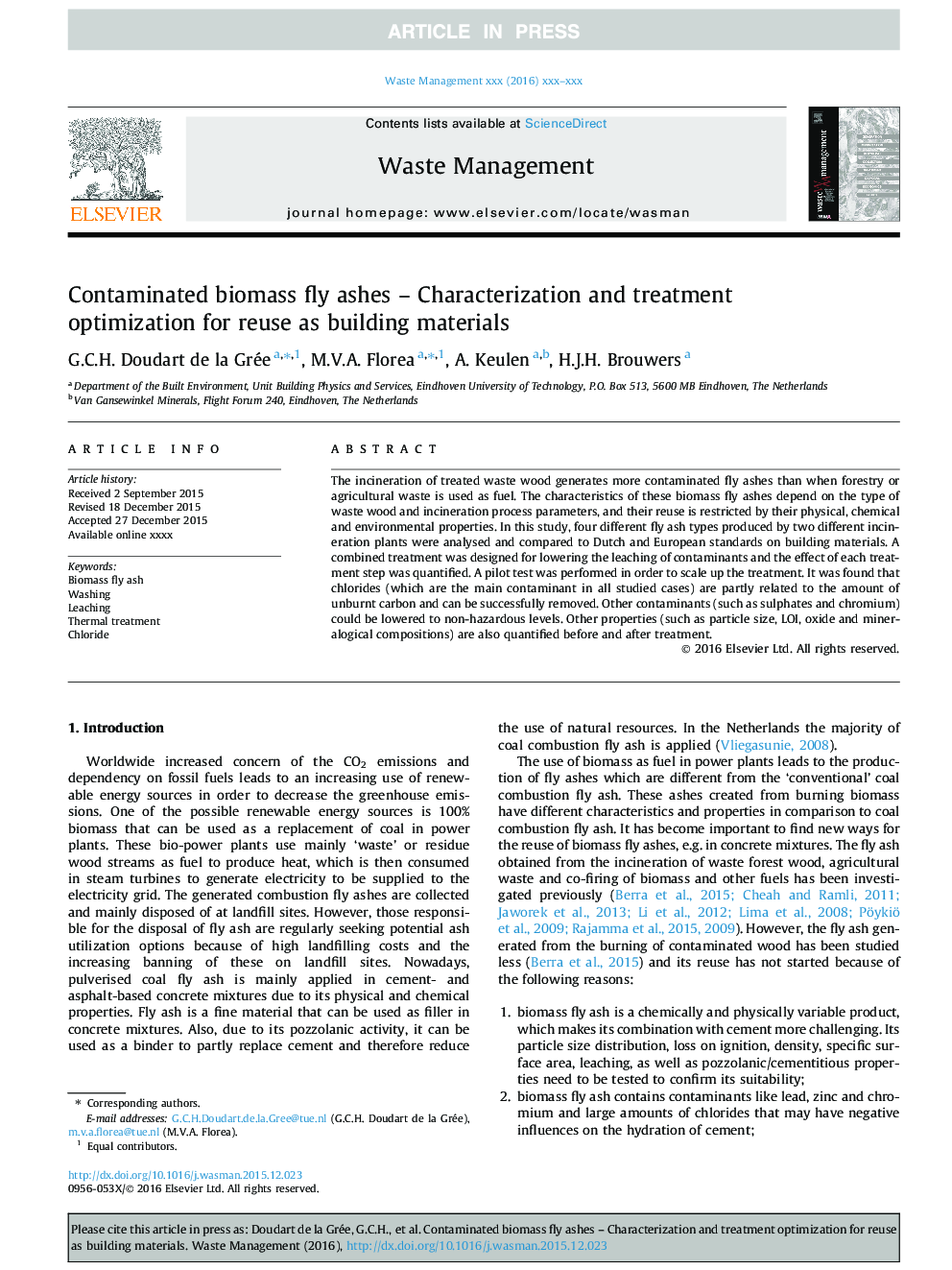| Article ID | Journal | Published Year | Pages | File Type |
|---|---|---|---|---|
| 6353753 | Waste Management | 2016 | 14 Pages |
Abstract
The incineration of treated waste wood generates more contaminated fly ashes than when forestry or agricultural waste is used as fuel. The characteristics of these biomass fly ashes depend on the type of waste wood and incineration process parameters, and their reuse is restricted by their physical, chemical and environmental properties. In this study, four different fly ash types produced by two different incineration plants were analysed and compared to Dutch and European standards on building materials. A combined treatment was designed for lowering the leaching of contaminants and the effect of each treatment step was quantified. A pilot test was performed in order to scale up the treatment. It was found that chlorides (which are the main contaminant in all studied cases) are partly related to the amount of unburnt carbon and can be successfully removed. Other contaminants (such as sulphates and chromium) could be lowered to non-hazardous levels. Other properties (such as particle size, LOI, oxide and mineralogical compositions) are also quantified before and after treatment.
Related Topics
Physical Sciences and Engineering
Earth and Planetary Sciences
Geotechnical Engineering and Engineering Geology
Authors
G.C.H. Doudart de la Grée, M.V.A. Florea, A. Keulen, H.J.H. Brouwers,
